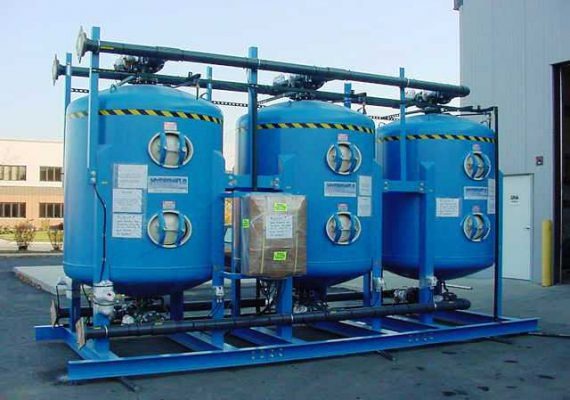Demystifying commercial cleaning: Key terms and concepts explained

Clean, hygienic environments have become essential components rather than optional extras for modern commercial operations. The success of any organisation relies heavily on cleanliness, which impacts employee health as well as brand perception. Business leaders may encounter difficulties understanding some of the specialised technical terms referred to in the commercial cleaning industry, so this article explores the key concepts to demystify them.
Commercial cleaning defined
Industrial, government, health, education and transport are just some of the sectors and properties that represent the field of commercial cleaning. These services maintain large office or factory spaces and school facilities but don’t handle residential environments. The cleaning roster operates to a set schedule that changes based on customer needs and includes daily, weekly or monthly sessions.
Janitorial vs commercial
The difference between janitorial and commercial cleaning generates the most common misconceptions, so let’s clarify what these terms mean:
- Janitorial services involve trained experts who perform regular cleaning duties including space vacuuming, refuse disposal, supply stock checking and restroom maintenance.
- Commercial cleaning providers perform high-demand chores like carpet shampooing, window washing, pressure washing and deep sanitisation that usually happen on an infrequent basis.
Understanding service distinctions helps you choose suitable cleaning methods that prevent extra expenses and ensure your property stays well-maintained.
Scope of work
The Scope of Work (SOW) details the exact cleaning tasks assigned to a team at a specific location. A well-defined SOW includes:
- Frequency (daily, weekly, etc.)
- Cleaning methods to be used
- Specific areas to be cleaned
- Supplies and equipment responsibilities
A mutual understanding of expectations between both parties can be established by reviewing the SOW before finalising a contract.
Touchpoint cleaning
The increased public attention to workplace hygiene in the wake of COVID-19 has made touchpoint cleaning a prominent cleaning practice. This involves routinely disinfecting surfaces that receive frequent human contact, such as door handles and lift buttons.
Green cleaning
Businesses focused on environmental responsibility actively look for green cleaning solutions. This term indicates the use of:
- Eco-friendly cleaning agents (non-toxic, biodegradable)
- Energy-efficient equipment
- Waste-reduction methods
An organisation’s sustainability goals may include green cleaning practices that protect employee wellbeing. Prospective employers will need to verify if the service provider holds appropriate sustainability practice certifications and uses approved products during their hiring process.
High-touch areas and high-risk zones
Commercial cleaning protocols necessitate regular cleaning of high-touch areas because they encounter continuous human contact. High-risk zones encompass spaces that have heightened exposure to contaminants, such as medical rooms, restrooms, food preparation areas and daycare centres.Specialised cleaning protocols must be used for these areas and often call for hospital-grade disinfectants or personal protective equipment for cleaners.
Electrostatic disinfection
The electrostatic disinfection technique operates by spraying electrically charged droplets which attach to surfaces to ensure complete coverage. During seasonal flu waves and outbreaks, schools, healthcare facilities and some offices may implement this disinfection method. It offers full and effective cleaning for surfaces that pose sanitisation challenges.
Microfibre technology
Modern cleaning practices have shifted towards using microfibre cloths instead of traditional cloths. These ultra-fine synthetic fibres trap more dirt and bacteria than cotton, reduce the need for harsh chemicals and minimise cross-contamination when colour-coded. The cleaning industry has adopted these tools to enhance cleaning efficiency while meeting higher hygiene standards.
Quality control systems
Professional service providers utilise quality control systems to maintain consistent service delivery. These may include digital checklists and mobile apps, supervisor walkthroughs and audits and customer feedback channels. These systems ensure that cleaning tasks are completed with consistent accuracy each time they are performed.
Work Health and Safety compliance and safety standards
Work Health and Safety (WHS) standards dictate how commercial cleaning crews should operate. This includes proper labelling of cleaning chemicals (such as Safety Data Sheets), the use of appropriate protective gear and biohazard handling training to cover proper procedures for managing sharp objects in medical and laboratory settings. Providers and businesses receive cleaning services risk penalties if they do not adhere to WHS compliance requirements.
Day porter services
Day porters operate throughout business hours to keep facilities clean all day long. Their typical duties consist of maintaining lobby cleanliness and managing spills, while also restocking restrooms and assisting with special events. Day porters work during regular hours, which allows them to be seamlessly integrated into your workspace routine.
Customised cleaning programs
The level of required service varies depending on the needs of each business. A reputable cleaning provider develops personalised programs using specific criteria such as facility square meterage and layout, the type of Industry (e.g. medical, industrial, retail), the number of employees or daily visitors and any specific health or cleanliness goals. Customised cleaning programs work to deliver the agreed results within set financial limits.
Seasonal and deep cleaning
Seasonal or deep cleaning services target areas that collect dirt throughout regular operations such as heating, ventilation and air conditioning vents, upholstery, carpets and light fixtures and ceiling fans. Long-term maintenance of these assets requires deep cleaning to be scheduled every few months to twice a year.
Choosing the right partner
With this knowledge, you can now confidently assess possible service providers. Consider these final questions:
- Do they understand your industry’s unique needs?
- Do they have evidence of their work quality through performance data or testimonials from past customers?
- Is their team trained, certified, and background checked?
An experienced commercial cleaning company will exceed your expectations by anticipating your changing needs and providing forward-thinking solutions to enhance workplace efficiency and safety. This sector focuses on delivering specialist operations that continue evolving and remain essential for business achievement. The ability to understand essential terminology and principles leads to better decision-making when hiring or enhancing commercial cleaning services.










